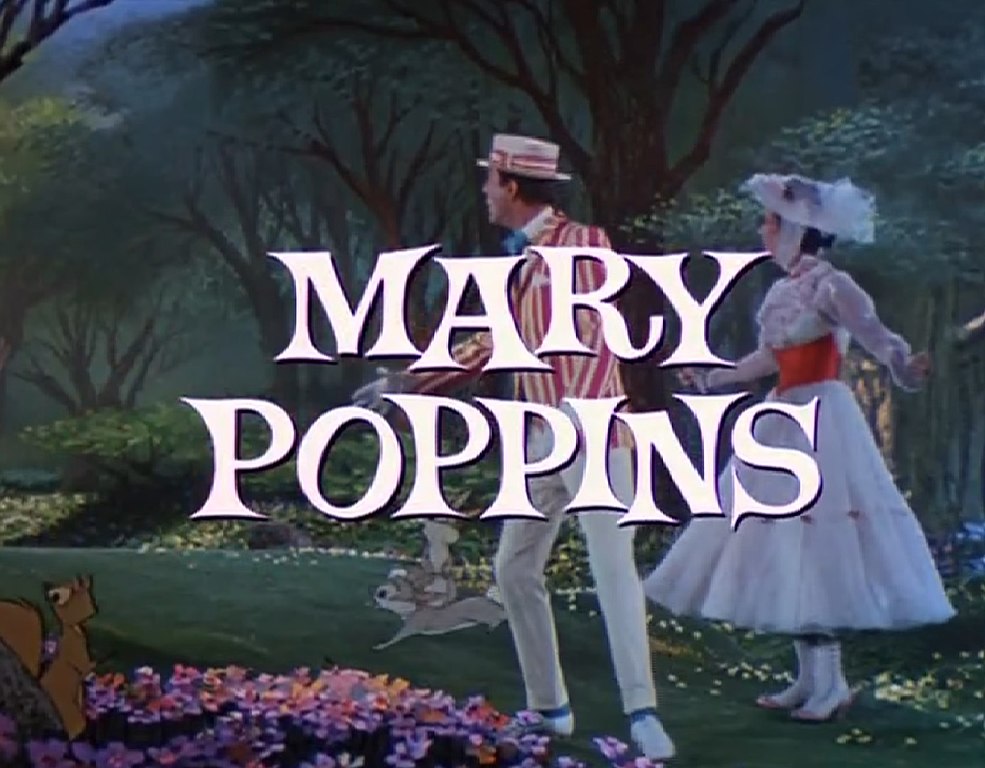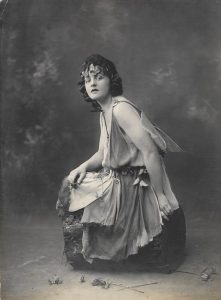 No, I’m not going crazy! There really is a connection between Mary Poppins and the occult.
No, I’m not going crazy! There really is a connection between Mary Poppins and the occult.I learned about it when a friend called to say she had taken her children to see the Mary Poppins Broadway play and found some of the stage imagery to be unsettling. It looked strange and ungodly.
When she got home, she began to root around the internet for information and found out that the author of the Mary Poppins series, a woman named Pamela L. Travers, was very much into the occult, theosophy, Hinduism, Zen, etc. Although the Disney film (which Travers apparently hated) was clean, her books are quite dark and mixed with many occultic elements from magick to reincarnation, all of which came from her association with theosophy.
Born Helen Lyndon Goff in Queensland, Australia in 1899, the author claims to have been able to read by the age of three. She grew up, changed her name to Pamela L. Travers and tried her hand at acting but was not successful. In 1924, she moved to London where she made a living reporting on theater events.
It was here that she met the Irish intellectual, George William Russell, known as A. E. Russell, who was a follower of Madam Blavatsky and the occult-based practice known as theosophy.
Apparently, Russell believed he and Travers had met in a former life, and formed a friendship with her, helping her to expand her circle of friends to include occultists such as G. I. Gurdjieff and P.D. Ouspensky. He also introduced her to esoteric eastern religions and folklore, encouraging her to use her powers of fantasy to create stories.
Not surprisingly, her first Mary Poppins book, published in 1934, contained many of the occultic ideas that had by now permeated her life. Far different from the clean and happy “Julie Andrews-type” Poppins that appeared in the Disney movie, Travers’ Poppins was a strict, ascerbic character who hated to be touched and was downright terrifying at times in the book.
Helene Vachet of the Theosophical Society’s Quest Magazine clearly describes the theosophical meaning behind much of the symbolism and story of Mary Poppins.
“Mary Poppins, one could say, resembles a guardian angel, demon, or cosmic being who comes from time to time to visit Earth,” Vachet writes.
The sky and wind bringing Mary Poppins to Cherry Tree Lane refers to a “walker of the sky” described in theosophic writings as a siddhi, or spiritual power to which a yogi joins himself to “behold the things beyond the seas and stars” and to “hear the language of the devas”.
Travers’ Mary Poppins is referred to in the books as the “Great Exception,” which Vachet says means that “she has gone beyond the evolution of humanity and her life now stands in contrast to those who have not yet reached this stage.”
One can also find clear references to reincarnation in a scene involving a starling and the newborn Annabelle. When the bird asks where she came from, Annabelle says: “I am earth and air and fire and water . . . I come from the Dark where all things have their beginnings. I come from the sea and its tides, I come from the sky and its stars . . . I remembered all I had been and I thought of all I shall be.”
The zoo scene in the book is also filled with occultic imagery. In this episode, the animals run the zoo and all the people are in cages. The king of the animals is a huge hooded snake that Poppins calls “cousin.”
The Disney version of the story was far different, much to Travers dismay. She was said to have been downright irascible throughout the filming and hated the final product. Among her many gripes was the fact that Bert the chimney-sweep had such a big role in the film, that the Cherry Tree Lane home was so opulent and that Mary Poppins “had a figure.” The 65 year-old Travers was said to have wept in despair when she first saw the film.
As the New York Times described in a recent article, Travers was “plainly a little bonkers, self-consciously oblique, and had much of Poppins's own astringency.” She was described as controlling, self-absorbed, sharp and intensely lonely.
Travers also had a strange private life. She had a penchant for older men and conducted several long-term relationships with women which are referred to as being “ambiguous.”
At the age of 39, she tried to adopt her teenage maid, offering to build the girl a room off of her study, ostensibly because she felt the girl’s parents had enough children. Both the family and the teen refused her offer.
In 1939, she was successful in adopting one of the twin grandsons of A.E. Russell’s publisher and, according to her biographer, was allowed to pick the twin she liked best. This son, whom she named Camillus, grew up believing that his father had been killed in an accident and didn’t discover the truth until, at the age of 17, he ran into his twin brother in a pub.
All the while, she continued to dabble in the occult, Sufism, Tao and Zen, and was a devoted disciple of Gurdjieff (co-inventor of the Enneagram) and even spent two summers in the U.S. living with the Navajo Indians. She passed away in 1996, having lived to the ripe old age of 96.
© All Rights Reserved, Living His Life Abundantly®/Women of Grace® http://www.womenofgrace.com

